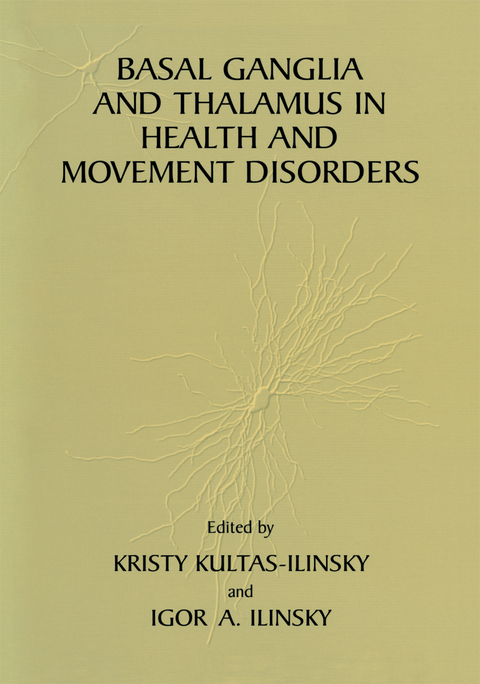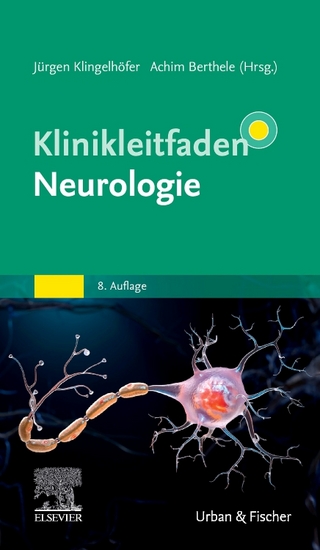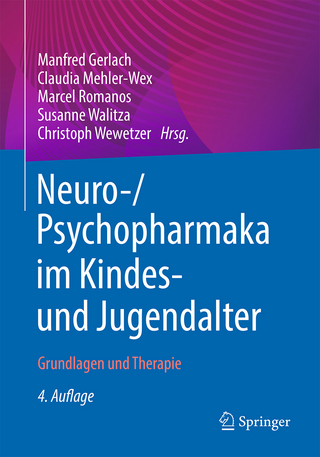
Basal Ganglia and Thalamus in Health and Movement Disorders
Kluwer Academic/Plenum Publishers (Verlag)
978-0-306-46543-7 (ISBN)
I. Basal Ganglia Circuitry in Movement Disorders: Historical Perspective and Overview of the Current Status of the Field.- What We Know and What We Have Left to Learn.- Basal Ganglia Circuits in Movement and Movement Disorders.- II. Anatomical and Functional Organization of Basal Ganglia and Motor Thalamic Circuits.- Microcircuits of the Striatum.- Local and Efferent Neurons and Intrinsic Modular Arrangement of the Human Striatum.- Efferent Connections of the Human Striatum and Pallidum: A Nauta Degeneration Study.- Cognitive Aspects of the Motor Function of the Striatum.- Neuroanatomical Organization and Connections of the Motor Thalamus in Primates.- Pallidal and Cortical Determinants of Thalamic Activity.- Physiological Evidence for Spinal Cord Input to the Motor Thalamus.- III. Neurotransmitters, Receptors and their Role in Motor Behavior.- Chemical Anatomy and Synaptic Connectivity of the Globus Pallidus and Subthalamic Nucleus.- Effects of Dopamine Receptor Stimulation on Basal Ganglia Activity.- Physiological Roles of Multiple Metabotropic Glutamate Receptor Subtypes in the Rat Basal Ganglia.- Muscarinic Receptors of the Dorsal Striatum: Role in Regulation of Motor Behavior.- IV. Movement and Sleep Disorders as Related to Basal Ganglia-Thalamic Circuits.- Functional Organization of Brainstem-Basal Ganglia Interactions as Viewed From the Pedunculopontine Region.- Fatal Familial Insomnia: A Disease Model Emphasizing the Role of the Thalamus in the Regulation of the Sleep-Wake Cycle and Other Circadian Rhythms.- V. Plasticity in Movement Disorders.- Plasticity and Basal Ganglia Disorders.- Mechanisms of Subthalamic Dysfunction in Parkinson’s Disease.- Neurotransmitters and Receptors in the Primate Motor Thalamus and Potential for Plasticity.- MicroelectrodeStudies of Basal Ganglia and VA, VL and VP Thalamus in Patients with Dystonia: Dystonia-Related Activity and Somatic Sensory Reorganization.- VI. Neuronal Activity in Movement Disorders.- Physiology of Globus Pallidus Neurons in Movement Disorders.- Physiology of Subthalamic Nucleus Neurons in Animal Models of Parkinson’sDisease.- The Motor Thalamus: Alteration of Neuronal Activity in the Parkinsonian State.- Neuronal Activity in Motor Thalamus of Parkinson’s Disease Patients.- Electrophysiological Insights into the Motor Control System in Parkinsonism.- Behavior of Thalamic Neurons in the Movement Disorders - Tremor and Dystonia.- The Motor Control Output Forming in Healthy Subjects and Parkinson’s Disease Patients.- VII. Mechanisms and Efficiency of Novel Treatments for Movement Disorders.- How are We Inhibiting Functional Targets with High Frequency Stimulation?.- Is there a Single Best Surgical Procedure for the Alleviation of Parkinson’s Disease?.- Thalamic Surgery for Tremor.- What is the Influence of Subthalamic Nucleus Stimulation on the Limbic Loop?.- Microelectrode Recording-Guided Deep Brain Stimulation in Patients with Movement Disorders (First Trial in Korea).- Neurotransplants in Treatment of Parkinson’s Disease.- Appendix (Summary of the Transcript of the Clinical Round Table Discussion on Pallidal and Subthalamic Surgery).
| Erscheint lt. Verlag | 31.3.2001 |
|---|---|
| Zusatzinfo | XVIII, 378 p. |
| Verlagsort | New York |
| Sprache | englisch |
| Maße | 178 x 254 mm |
| Themenwelt | Medizin / Pharmazie ► Medizinische Fachgebiete ► Neurologie |
| Medizin / Pharmazie ► Studium | |
| Naturwissenschaften ► Biologie ► Humanbiologie | |
| Naturwissenschaften ► Biologie ► Zoologie | |
| ISBN-10 | 0-306-46543-4 / 0306465434 |
| ISBN-13 | 978-0-306-46543-7 / 9780306465437 |
| Zustand | Neuware |
| Informationen gemäß Produktsicherheitsverordnung (GPSR) | |
| Haben Sie eine Frage zum Produkt? |
aus dem Bereich


